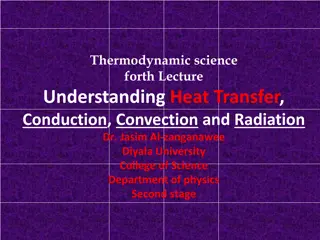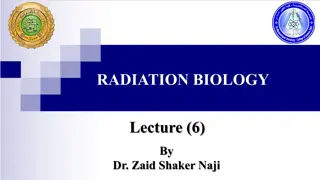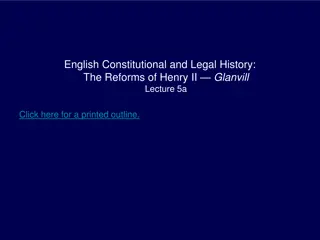Understanding the Photoelectric Effect and Einstein's Equation
The photoelectric effect is explained by Einstein through assumptions of photons and their interaction with electrons on a metal surface. The maximum kinetic energy of ejected electrons depends on the frequency of incident radiation, as shown in Einstein's Equation. The greater the frequency, the higher the stopping potential. This equation sheds light on the relationship between kinetic energy, frequency, and work function in the photoelectric effect.
Download Presentation

Please find below an Image/Link to download the presentation.
The content on the website is provided AS IS for your information and personal use only. It may not be sold, licensed, or shared on other websites without obtaining consent from the author. Download presentation by click this link. If you encounter any issues during the download, it is possible that the publisher has removed the file from their server.
E N D
Presentation Transcript
Dr. Devidas Rushiji Bambole M. Sc. Ph. D. Department of Physics Matoshree Vimalabai Deshmukh, Mahavidyalaya, Amravati.
Einstein explains the photoelectric effect by making following assumptions. 1) A radiation of frequency consists of a stream of discrete quanta of energy h . These quanta are called photons . 2) Photons move through the space with the speed of light. 3) When the photon of energy h is incident on the metal surface, the entire energy of photon is absorbed by a single electron without any time lag. The probability of its absorbing two or more photons at the same time is negligible.
When a light i. e. a stream of photon is incident on metal surface then they collide with the electrons in the metal. The electron absorbs the photon completely. The energy of photon is transferred to the electron. A certain amount of this supplied energy is consumed by the bonded electron to get free from the metal-surface. The amount of energy required to make free from atom is known as work function work function ( ).
The remaining supplied energy is converted into the kinetic energy of the free electrons. So, the maximum kinetic energy of an ejected electron is given by Kmax= h - ---- (1) Where, h is the Planck constant and is the frequency of the incident photon. is the work function (sometimesdenoted by ), which gives the minimum energy required to remove a electron from the surface of the metal. The work function satisfies the equation- = h 0 -------- (2) Where, 0is the threshold frequency for the metal.
Therefore, from equations (1) and (2), the maximum kinetic energy of an ejected electron is given by Kmax= h - h 0 Kmax = h ( - 0 ) Kinetic energy is positive, so when > 0 ,then the photoelectric effect must be occur. Above equation is called as Einstein's Equation of the Photoelectric Effect. This equation shows that - the maximum kinetic energy of the photoelectron depend upon the frequency of the incident radiation. And it increases with the increase in frequency.
If VC is the cut off potential then Kmax = = e . Vc e . VC= h ( - 0 ) This equation shows that- the stopping potential will be greater for greater frequency.























